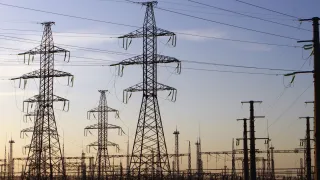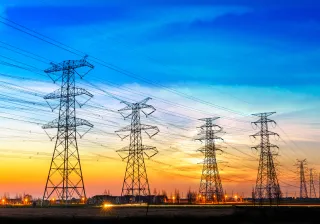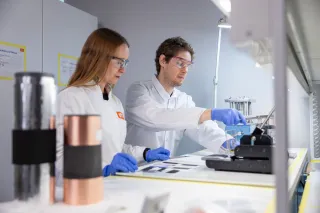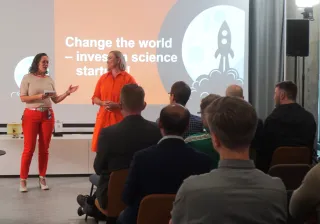Energy systems around the globe are faced with massive challenges and demanding timelines for resolving them. There is little doubt that artificial intelligence and machine learning will play a growing role in optimising energy systems and markets, but harnessing their potential requires more than computing power to run the numbers. We had the pleasure of hosting three experts to discuss the role of AI in future energy systems from their individual perspectives and share their views on what it takes to capture the benefits.
Hosted by VTT’s Kirsi Kotilainen, we invited Janne Seppänen, Professor of Practice, Aalto University and Senior Expert at national grid operator Fingrid, Mikko Muurinen, Head of Data and AI at Helsinki-based energy company Helen, and Sergio Motta, Research Team Leader at VTT to share their ideas on the role of AI in the future of energy systems.
Approaching the sector and its transformation from different angles, our expert guests shared their experiences and ambitions around potential application areas of AI in energy, including forecasting generation capacity, stability, reliability, network development, pricing, and more.
You can listen to the full webinar here.
Solutions begin with the right questions and good data
Move away from fossil-based energy is good news for the planet, but far from easy to the energy system. Not only does it mean having to overcome great challenges around alternative energy sources and storage, but decarbonisation will also make the future energy system more volatile and complex. To increase the flexibility and efficiency of the system, new data and AI-based solutions are developed.
In recent years, both the quantity and quality of data has rapidly increased in the energy sector. More measurements are done and more (real-time) data is collected than ever before. With great data, the next step is finding new ways to use it to support the transformation of the energy system.
“As an industry, we haven’t fully figured out, how to use data to tackle the future challenges. We still need to decide, which are the ideal questions we could answer with the help of AI,” explains VTT’s Sergio Motta. According to him, identifying the right questions and unlocking the full potential requires a deep understanding of both machine learning methods as well as the power system side.
As an industry, we haven’t fully figured out, how to use data to tackle the future challenges.
And while much of complexity of the energy system is invisible to the average consumer, its critical role in the overall function of the society makes the development and roll-out of new solutions particularly challenging. “We cannot afford to test new solutions not knowing if they will work or not. It is important that we understand the gravitas and the substance,” Motta says.
Reliable network requires planning ahead
Transmission network operators have a big responsibility in securing reliable electricity supply that keeps a modern society up and running – while also adjusting the system to combat climate change. Changes in the market can be quick but building a grid doesn’t happen overnight. Instead, Janne Seppänen from Fingrid explains, transmission network operators create different scenarios to reflect the possible futures of the system. The network planning process is then carried out based on these different scenarios and a series of simulations of both markets and grids.
“These simulations are data intensive, and I believe that in the future, we will be able to use AI to help us with this step,” Seppänen explains.
With simulations, the network operator can develop an understanding of future needs – and plan accordingly. For example, they can demonstrate the need to transfer power regionally from surplus areas to high consumption areas and help determine which investments must be made to build lines and strengthen the network.
The same is true at the Nordic level. As both consumption and production are forecast to grow significantly in the next decades, the Nordic TSOs are building over 10 000 km of lines and over 100 substations, making total investments of over 25 billion euros during the next ten years. In addition to proactive investments, the success of the next years and decades will rely on new tools – including AI – and cooperation at the Nordic level.
With a reliable grid and competitive prices at the European level, the Nordics will be a favorable place for power intensive investment.
“In the future we will need new data and solutions to run the system in the optimal way, but the outlook for Nordic energy system is positive. With a reliable grid and competitive prices at the European level, the Nordics will be a favorable place for power intensive investment,” Seppänen predicts.
Endless opportunities for data-driven solutions
Forecasting weather, predicting capacity, detecting anomalies, optimising efficiency, monitoring demand… As Mikko Muurinen from Helen lists off different application areas, it becomes clear that opportunities for new AI and data-based solutions are everywhere.
Compared to a company with a single product or customer profile, energy companies like Helen are continuously working to optimise different aspects of their business that can vary from energy production and district heat to e-traffic and smart living solutions.
AI is everywhere at Helen and our goal is to be an AI-driven company.
Whether it is predictive maintenance, customer experience, or pricing models, data can play an important role in improving processes.
“AI is everywhere at Helen and our goal is to be an AI-driven company. We are actively trying to create an AI-driven culture, and we want our employees to understand what AI could bring to their everyday work,” Muurinen explains Helen’s approach.
With examples from Helen and Fingrid, there is little doubt that AI will play a crucial role in the transformation of the energy system in the coming years and decades. Great benefits can be achieved by combining state-of-the-art AI methods with substance expertise.
How to make it happen?
There is no “one size fits all,” instead, the key for optimising performance is in truly understanding the often-intricate challenges and opportunities of the industry. For energy companies, it’s a good moment to identify the opportunities and to seek out the right tools to capitalise them.
VTT has unique knowledge of power systems and energy markets, as well as high expertise in state-of-the-art AI technology. By combining these two, VTT has created a unique tool that harnesses the power of data for accurate forecasting in the energy sector.
If you want to read more about our VTT EnergyTeller software solutions, you check it out here. If you want to learn more about how we could help you, get in touch – we would love to hear from you!





